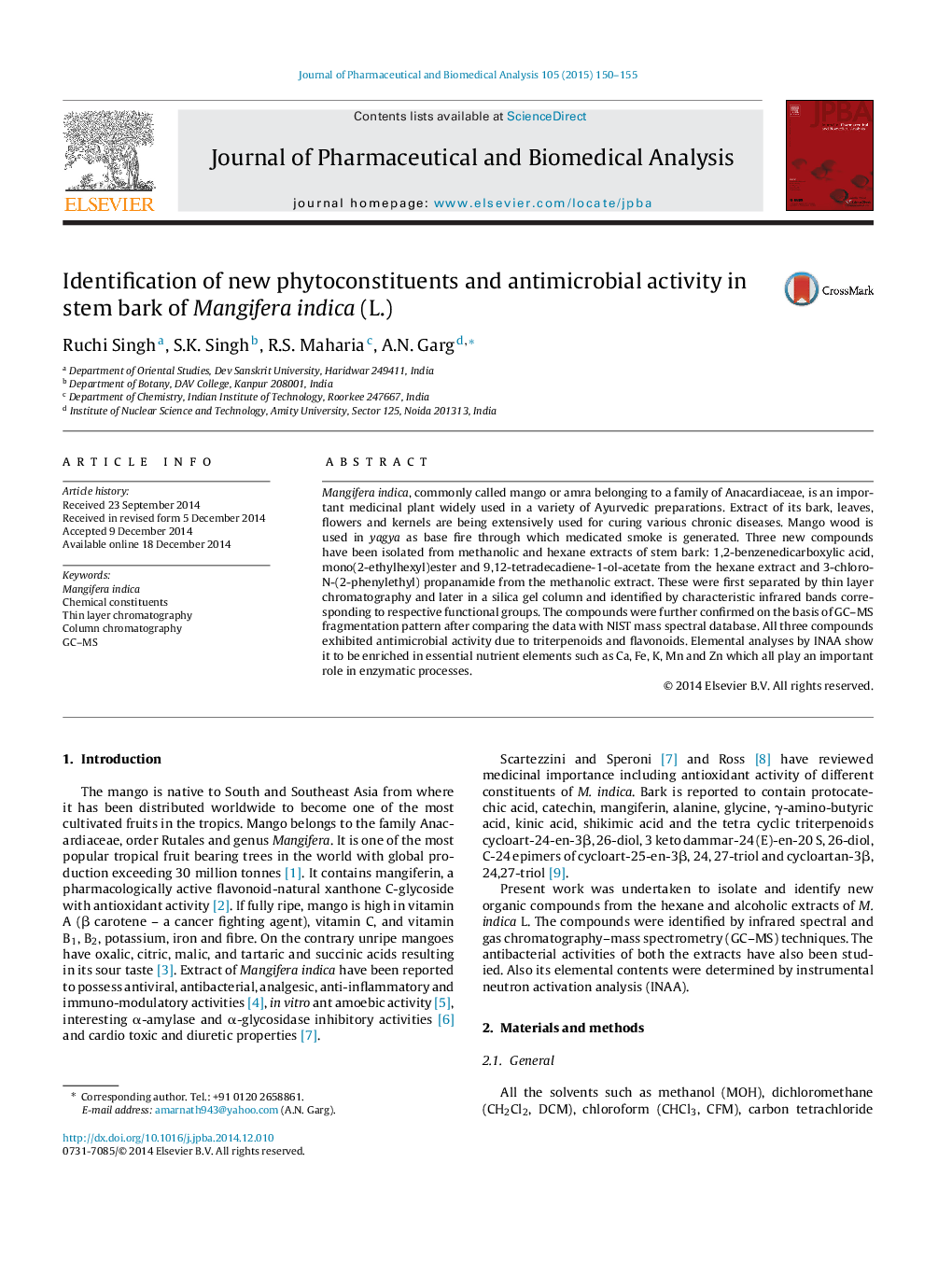| Article ID | Journal | Published Year | Pages | File Type |
|---|---|---|---|---|
| 1221051 | Journal of Pharmaceutical and Biomedical Analysis | 2015 | 6 Pages |
•Soxhlet extraction of mango wood in hexane and methanol.•Three new compounds separated by TLC and column chromatography.•Compounds characterized by infrared spectroscopy and GC–MS.•Hexane and methanol extracts exhibited antimicrobial activity.•INAA data showed higher contents of Ca, K, Fe, Mg, Mn and Zn.
Mangifera indica, commonly called mango or amra belonging to a family of Anacardiaceae, is an important medicinal plant widely used in a variety of Ayurvedic preparations. Extract of its bark, leaves, flowers and kernels are being extensively used for curing various chronic diseases. Mango wood is used in yagya as base fire through which medicated smoke is generated. Three new compounds have been isolated from methanolic and hexane extracts of stem bark: 1,2-benzenedicarboxylic acid, mono(2-ethylhexyl)ester and 9,12-tetradecadiene-1-ol-acetate from the hexane extract and 3-chloro-N-(2-phenylethyl) propanamide from the methanolic extract. These were first separated by thin layer chromatography and later in a silica gel column and identified by characteristic infrared bands corresponding to respective functional groups. The compounds were further confirmed on the basis of GC–MS fragmentation pattern after comparing the data with NIST mass spectral database. All three compounds exhibited antimicrobial activity due to triterpenoids and flavonoids. Elemental analyses by INAA show it to be enriched in essential nutrient elements such as Ca, Fe, K, Mn and Zn which all play an important role in enzymatic processes.
Graphical abstractFigure optionsDownload full-size imageDownload as PowerPoint slide
